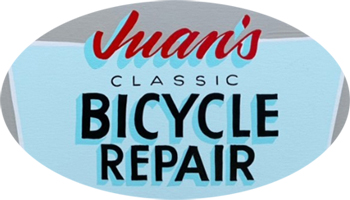It is nearing the end of 2020 - a hellish year for many dealing with the Covid19 pandemic: far worse for some, and far less for others. Many sectors of the global and local economies have come to a virtual standstill (food, service, tourist industry etc), while others like the bicycle industry have seen a skyrocketing effect similar in nature to the bike boom of 1972/3. Department stores have entirely cleared out racks that would otherwise store bicycles for sale. Repair shops are literally turning away work in many places. Retail and wholesale outlets are out of even the most base-level goods like tubes, tires, chains and other essentials.
A need or desire?
A direct correlation can be drawn between the spike in sales of nearly all corners of the cycling economy and people's innate desire to spend more time outside during the confines of a both leisure-preventing and leisure-inducing pandemic. People who have not thrown a leg over the bike are taking up the activity en-masse while newcomers are taking up the activity for the first time all-together. Many who are not as affected directly or indirectly by the pandemic via class, wage, race, or gender privilege have been able to stimulate the boutique sub-sectors of the cycling world through the acquisition of new high end cycles and gear just as well.
But what of the individuals and families who are taking up cycling not so much out of desire, but from a place of pure necessity as streams of income begin to dwindle, job and opportunity loss presents itself, public transportation becomes compromised or inactive, and the availability of all bicycles becomes increasingly difficult?
A call to bike manufactures
With poorly manufactured, low-cost bicycles being the only thing many people and families can afford, one has to wonder if, and/or how the demands for accessible, well made, and serviceable bicycles/components can be met when the middle-class driven sectors of the bicycle economy are not only tailored primarily to high-end, high cost, race-designed bicycles and products, but when said manufactures are literally thriving from sales of the aforementioned during Covid.
This is a call to bicycle manufactures to consider making a concerted effort to help produce affordable, serviceable, non-proprietary in nature, utility/practicality centered bicycles using pre-existing tooling, infrastructure, design and manufacturing processes (be them large or small scale). This is NOT a call for lower cost full-suspension mountain bikes or sub 20lb carbon fiber racing bikes: moreover this is a call for the big manufacturing names in our industry to stop centering cooperate earnings and year-end sales figures as the seemingly sole focal point of design, manufacturing and marketing. We all understand that high end bikes are where the highest profit-margins exist, but the real question pertains to what degree of help you are all willing to exercise in a time when the gap between the rich and poor is ever-increasing with no end in sight.
We (the lower class) cyclists need access to cost-effective bicycles that will not end up in landfills after a few short seasons of use and subsequent failure. We need the ability to acquire bicycles that receive similar attention to durability and wear-life that a higher cost bicycle would offer. We need practical design(s) that centers non-racing cycling as the primary function of the bicycle. What we really need is access to the same degree of quality and usability that is otherwise only granted to those with deep enough pocket books and lines of credit.
 |
| No disrespect my lycra-clad weekend warriors, but if your Covid problems look like this you may not be who I am talking about here.. |
Accessibility?
Sure: a great practice for cyclists of lesser opportunity is, or course, to use whatever bicycle they already have at hand (if at all), be it a low quality department store bike or a trusty second hand bike from yesteryear that may need service to run again. I always advocate for the use and service of any quality used bicycle as much as possible before going out and buying a brand-new replacement (yes I know this does not directly stimulate the economy via new bike sales). As the previous may not be an option for many, having the accessibility to a bike that will give the owner years of use and prevent yet ANOTHER disposable, plastic-centric, not-soo-serviceable bicycle from entering the landfill (a function of my job is regularly moving massive piles of these bikes via truck to a recycling center), we certainly need to begin rethinking modalities of mitigating hinderances to accessibility by such calls to the bigger (and smaller) manufacturers who dominate market-share.
I have no problem with bicycle racing (other than its embedded misogyny, whiteness, sexism, unequal representation, unequal prize earnings - to name a few), but I do have a huge problem with the fundamental effort of too big to fail bike companies continuing to prioritize the capitalization of high-end bike sales in the midst of a world-sweeping pandemic and its well-known effects. Though this is certainly more of a shot in the dark; anyone in the industry who may be listening, please read and consider these words as the need for accessible, good quality, cost-effective bicycles used for transportation as well as both mental and physiological health has never been more essential.
For those of us in the bike kitchens, bike co-ops and other not-for-profit spaces, please keep up your very important and hard work of keeping people on bikes and helping do what we can to foster accessible bicycle acquisition and service to those who need it most. Thank you!





















































































